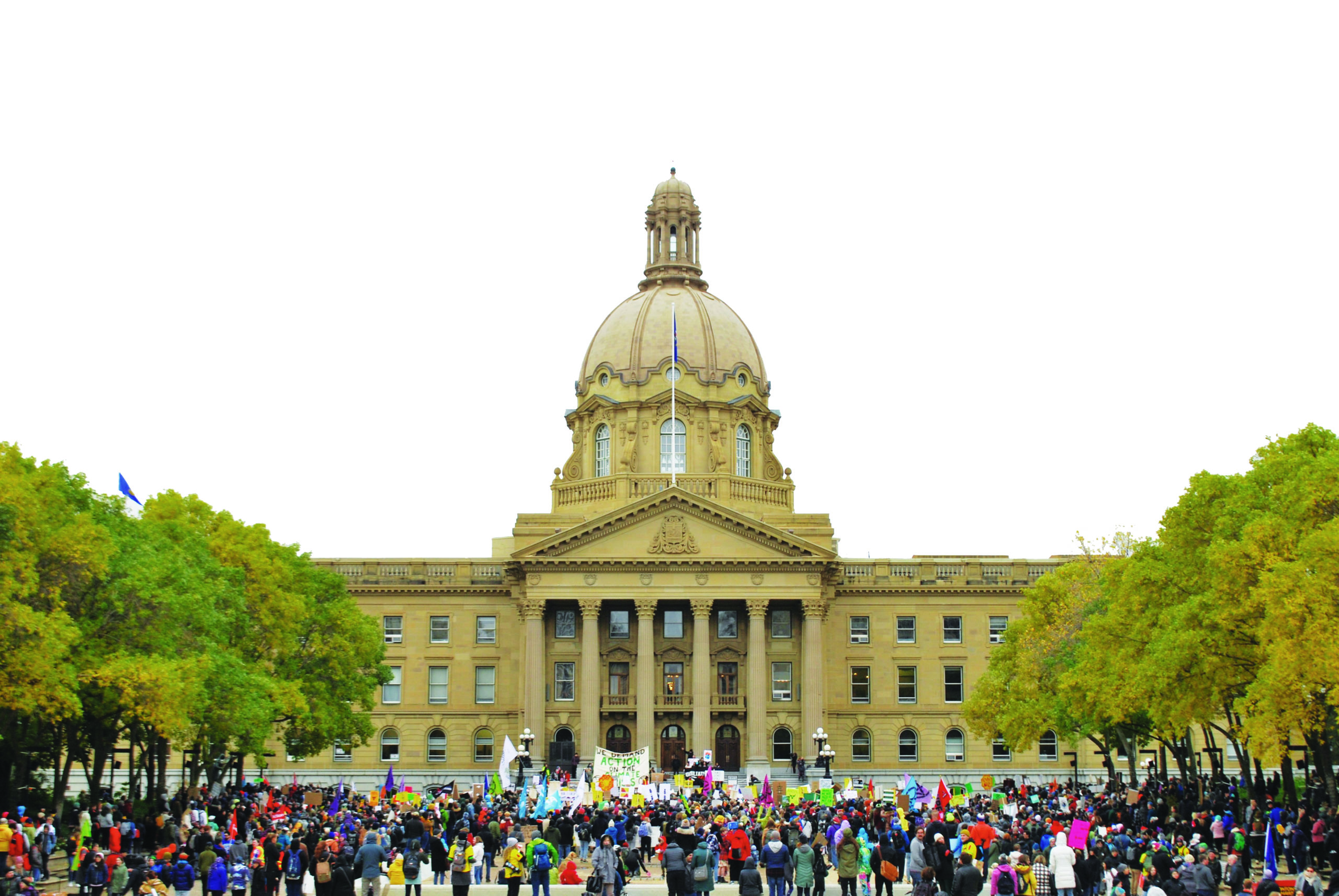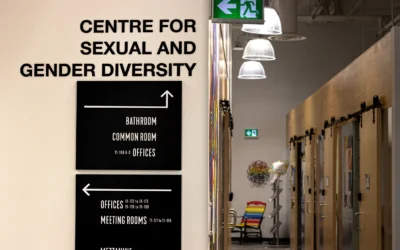Edmonton City Council joined a number of other Canadian municipalities on Aug. 27 of this year by voting in favour of declaring that the dangers of climate change constitute an emergency. The motion was passed with 10 councillors in favour and three opposed, and was a landmark decision that was met city- wide with a resounding, “OK… now what?”
The day that succeeded the declaration did not look much different than the day that preceded it. There were no sirens blaring in the streets, nor calls for citizens to be drafted into the Climate Corps, as cool as that sounds. In fact, the first day that did have a noticeable sense of emergency was a month later, on Sept. 27, and had little to do with municipal policy. On this day, Edmontonians joined participants across Canada in the global climate strikes, taking to the streets to demand our nation’s most powerful take greater steps toward securing the planet’s future.
“It was partially a moment for people to get involved in the federal election outside of just the ballot box,” says Stephen Buhler, a member of Climate Justice Edmonton, a volunteer collective that helped organize the strikes, “for voters and citizens to show that we are demanding action.”
Across Canada, the overwhelming message was that our leaders have thus far been fatally moderate in their response to a crisis that demands sweeping changes. With all the energy being diverted toward big-picture issues — some version of “no more pipelines” was written on the mode of marcher’s signs — it’s understandable why the enthusiasm for city council’s rhetorical dedication to combat climate change with greater urgency was tempered. If we really do need sweeping changes, nobody can be chastised for asking: what is a mere city supposed to do?
For one, three-quarters of Canadian energy is consumed inside municipal areas, says data gathered by Natural Resources Canada. The offending sectors rank from highest to lowest as follows: transportation, electricity and heat for commercial buildings, for residential buildings, and industry. This means that not only is most energy consumed inside of towns and cities, but the consumers fall well within the purview of their governments.
Understanding this, the City of Edmonton drafted up a set of policies, regulations, and changes in spending habits called the Energy Transition Strategy (hereafter abbreviated to EnTS, to avoid confusion with ETS, the Edmonton Transit System) back in 2015. However, “a lot has changed since then, and the speed of change and the sense of urgency has increased,” says Andrea Soler, community strategist for Change for Climate Edmonton, an administrative department that is in charge of much of the City’s climate program. So, when the emergency was declared, the EnTS was updated to align with the targets outlined by the Intergovernmental Panel on Climate Change (IPCC) last year: to limit overall global warming to 1.5C above pre-industrial levels. The strategy outlines in detail how the City can reduce emissions to where they need to be to meet that target. Of course, some of the changes are easier to implement than others.
“None of it is low-hanging fruit,” says Coun. Aaron Paquette. “But the most low-hanging of the fruit would be a district energy system.”
In short, district energy systems produce thermal energy at a central location that can be transferred to nearby buildings for both electricity and heat as needed. It doesn’t sound like much, but they have a surprisingly large effect on the total energy used to provide for household needs, mainly since they generate heat and electricity simultaneously.
The next step, Paquette says, is expanding transit. According to the EnTS, transportation accounts for 42 per cent of Edmon- ton’s energy consumption, with the majority of this coming from personal vehicles. The currently in progress expansions of the ETS have the potential to cut total energy use by four per cent — more, when factoring in the plan to replace diesel buses with electric ones, and even more when factoring in the plan to in- crease residential density in established neighbourhoods and limit suburban sprawl.
“Everyone is part of this larger system that is impacted by climate change, and we’re painfully aware that our local actions have global impacts.”
— Andrea Soler, community strategist at Change for Climate edmonton
These examples alone do not present massive reductions, but the EnTS claims that Edmonton can meet the IPCC targets almost entirely on the back of policies and initiatives like these, municipal regulations like more energy efficient building codes, and actions that can be undertaken by residents like installing solar panels, for which the City plans to provide aid.
“We try to take a systematic approach, because there are all these little actions you can take, but when you add them together it makes a huge difference,” says Soler. “Everyone is part of this larger system that is impacted by climate change, and we’re painfully aware that our local actions have global impacts.”
Buhler says that there are also plenty of municipal-level components to the loose policy platform that Climate Justice Edmonton is oriented around called the “Green New Deal.”
“Communities have different needs, and so it’s up to the community to decide what exact climate plan is best for them. A Green New Deal in Toronto isn’t going to look exactly like the one we want here,” he says. “It can include everything from putting money into green infrastructure, better transit, even social housing, because poverty often forces people into the systems that drive climate change.”
The primary, self-evident limit of municipalities is that there are a lot of them, none with the singular capacity to affect change on the scale needed to steer the world from impending extinction. Although there is no real way to get around this, for Paquette, part of the benefit of declaring the climate emergency was bringing attention to the EnTS as a potential template for others.
“We already had our strategy, so declaring the emergency meant that we’re saying this is very important to us, and to other municipalities: take a look at what we’ve done and follow suite,” he says.
He adds that “because we have a plan, we are a safe investment for (federal) grants,” for environmental projects, because, “you know it’s actually going to be put towards something worthwhile,” which could also encourage others to emulate.
Another limit is the aforementioned big-picture issues. New energy-efficient furnaces don’t mean as much when the country is exporting 3.5 mil- lion barrels of oil a day to vertically integrated refineries on the Gulf Coast. One problem that Edmonton has is that electric cars and buses are limited in how much they can reduce emissions because of Alberta’s electricity grid. Fifty per cent of our electricity is generated from coal, while another 39 per cent comes from natural gas, says the National Energy Board, meaning that electric vehicles still rely heavily on carbon-intensive fossil fuels. As well, in cold weather they risk emitting more because they require more of this electricity to heat the engine, as opposed to gasoline engines which heat themselves by constantly exploding on the inside.
According to Paquette, there are two main solutions to this: energy conservation (reducing the overall energy needed), and producing more energy locally. In doing this, the City can decide exactly how it is produced — the EnTS talks of solar, geothermal, and potentially even nuclear power.
What this represents is a move towards municipal energy independence. District energy systems and local electricity generation can reduce the reliance on coal and other non-renewables, while expanding transit and smart urban planning can drastically reduce the need for oil-based fuels. Edmonton is becoming carbon-neutral mostly irrespective of the actions of higher-ups, reducing (by a sliver) the demand for these lucrative, carbon-intensive, and nationally controlled resources. It may be wishful thinking to expect this movement to be adopted at large, but if it was, it would reduce the need for these resources entirely — a bottom-up energy transition to circumvent all that stuff everybody was marching over.





0 Comments